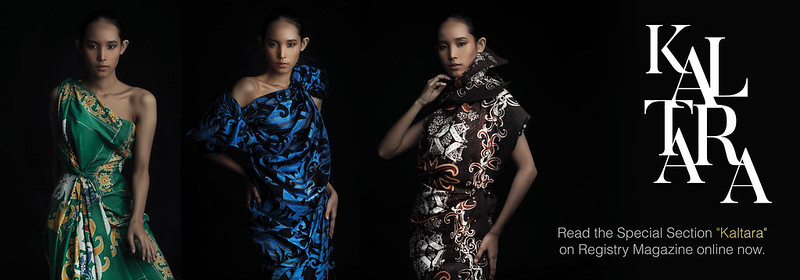SIGN IN
Sign In to Your account.| Sign in with Your social media account. |
Kab. Tabanan, Bali
Kab. Tangerang, Banten
Tangerang, Banten
Yogyakarta, DI Yogyakarta
Jakarta Barat, DKI Jakarta
Jakarta Pusat, DKI Jakarta
Jakarta Selatan, DKI Jakarta
Jakarta Timur, DKI Jakarta
Jakarta Utara, DKI Jakarta
Kab. Bogor, Jawa Barat
Surabaya, Jawa Timur
Kab. Manggarai Barat, Nusa Tenggara Timur (NTT)
| Latest Luxury |  |
| Wine & Dine |  |
| Travel |  |
| People & Events |  |
Made Wianta, Exploring the Diverse Artistry of a Visionary Maestro
|
Share
|
Made Wianta's artistic journey is a captivating tale of innovation and transformation, marked by nine distinctive stylistic phases that define his remarkable career. These periods encompass Karangasem, the Dot Period, Rectangles, Triangles, Assemblies, Calligraphy, Calendars, Happening Arts/Installations, and Mixed Media.

Among the zeniths of his artistic endeavors, "Art and Peace" stands as a monumental achievement in Wianta's oeuvre. This grand spectacle unfolded at the close of 1999, heralding the dawn of a new millennium. In a profound gesture, Wianta commemorated this momentous occasion while expressing solidarity with the victims of the 1998 Jakarta riots. "Art and Peace" materialized as a colossal work spanning an astounding two 1,000 meters of cloth, serving as a symbolic marker for the new millennium. This vast canvas bore the word 'Peace' inscribed in numerous languages from across the globe, accompanied by messages of peace contributed by prominent figures, even world leaders. Adorned in pristine white attire, dancers traversed Sanur Beach, gracefully pulling and manipulating the lengthy cloth while reciting verses of peace. The piece also found acclaim at the Biennale Merano in Italy.


Beyond these distinct stylistic phases, Wianta frequently channeled his creative energy into thematic artworks. Notable examples include his passionate protests against deforestation, river pollution, and air pollution, with some of these pieces finding a home in the Singapore Art Museum. His unique take on road clutter culminated in installations and the happening art piece 'Street' in Ubud, while 'Graffiti Sound' unfolded along the streets of Kuala Lumpur, addressing the issue of noise pollution. An intriguing facet of his artistic repertoire is the musical instrument he crafted from a coconut tree, known as the Penglamusan, now a permanent exhibit at the Der Kulturen Museum Basel in Switzerland. Wianta's unwavering commitment to global harmony is evident through the "Art and Peace" project and the installation of the "2000 Unity and Diversity" stones at Bali's Garuda Wisnu Kencana cultural park, inviting all inhabitants of Earth to coexist harmoniously.
Following the tragic Bali bombing in 2002, Wianta passionately raised awareness of the human suffering inflicted by terrorism. He used cows' blood to stain canvases, upon which haunting images of the Bali bombing were printed. With bare hands, Wianta added a visceral layer of cow's blood, symbolizing the brutality and inhumanity of this act of terror. These works, part of the "Blood Covenant" series, also found a place at the 2003 Venice Biennale.





Wianta's deep appreciation for the archipelago's splendor is a testament to his artistic voyage. "Run for Manhattan '' is a striking piece that delves into a pivotal historical event—the exchange of Run Island in the Indonesian archipelago for Manhattan in America through the 1667 Treaty of Breda. This artwork not only chronicles this grand historical narrative but also showcases Wianta's innovative techniques. He skillfully employs mixed media, clay, sand textures, and the dot technique to portray the beauty of the spice island Run and its vibrant emerald coral. Two works, "Spice Island '' and "Golden Island," graced the World Bank in Washington DC in celebration of Indonesia's collaboration anniversary in 2017, with "Treasure Island" exhibited at the 2016 Singapore Biennale. Notably, Wianta captures the essence of nutmeg, the driving force behind the exchange between Run and Manhattan, in an abstract surreal style. A backdrop of the VOC fortress symbol and golden nutmeg, dripping blood-red, portrays the spice's tragic history.


Wianta's depiction of New York City, dominated by its iconic skyscrapers, is a testament to his signature style during the quadrangle period. "New York Town Hall" presents the cityscape with a precise color scheme and Wianta's cubist quadrangles. The majesty of the World Trade Center is eloquently conveyed in Wianta's etchings, while the Statue of Liberty shines resplendently as a New York/Manhattan landmark, juxtaposed with volcanic lava as a poignant reminder of Run Island. Beneath the skyscraper shadows, Fifth Avenue glistens (pictured).





Wianta's artistic prowess was further validated by research conducted by Professor Oohashi from the Foundation for the Advancement of International Science and the National Institute of Neuroscience at CIBA University. This research unveiled a remarkable correlation: when Wianta painted, his brain activity mirrored that of meditating priests. Prof. Oohashi's work on "Art for Healing" found Wianta's colorful vibrations to be exceptionally conducive to healing, setting him apart in the art world.


In a serendipitous encounter in 1978, Wianta crossed paths with Paloma Picasso, daughter of the legendary Pablo Picasso, in Ubud. Facilitated by Pande Suteja Neka, owner of the Neka Museum, this meeting led to a profound exchange of ideas and a showcase of Wianta's work. Paloma Picasso, deeply impressed, prophesied that Wianta would rise to become a renowned artist, much like her father. This premonition served as a heartfelt prayer, and as Wianta's career unfolded, it became a prayer splendidly answered.

Made Wianta's work, characterized by its periodization, has led him to be regarded as one of Indonesia's artistic treasures, often likened to the great Picasso. In an exclusive interview with French art curator Jean Couteau, Paloma Picasso acknowledged the striking parallels between Wianta and her father, in terms of their visionary thinking, artistic eccentricity, and prolific creativity. Their works, both forward-thinking and prescient, find kinship in their enduring impact on the art world.
Follow our RegistryE social media to get our latest updates:
Instagram: registrye
Facebook: RegistryE






